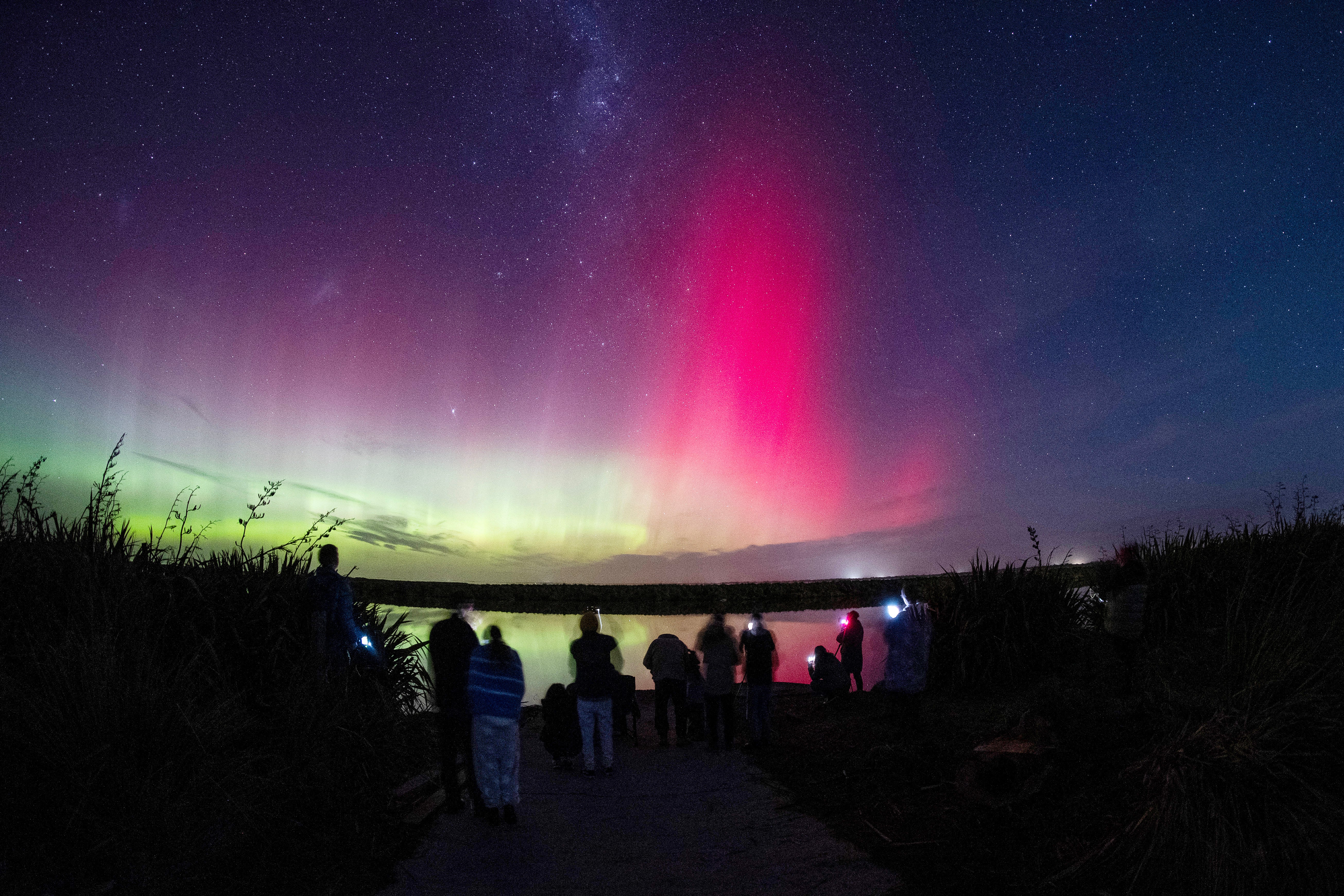A bright green meteor was seen zooming past Sydney on Sunday as spectacular southern lights lit up the skies across most of Australia and New Zealand.
A Sydney resident named Tom McCallister posted a video of the meteor, about the size of a basketball, traversing the city’s skies.
“Absolutely magnificent meteor seen travelling east to west over Sydney this evening,” Mr McCallister captioned the video posted on Facebook. “This was looking north at 17:57 local time.”
Astrophysicist Brad Tucker, from the Australian National University, agreed that the object was indeed a meteor due to its unique blue-green colour, indicative of iron and nickel content.
People across New Zealand and on Australia’s east coast were also treated to a dazzling display of southern lights on Sunday.
Many skygazers later shared photos of aurora australis on social media. The space weather phenomenon is caused when bursts of charged particles released from the Sun – known as coronal mass ejections, or CMEs – interact with the Earth’s magnetic field, creating what’s called a geomagnetic storm.
The lights are called aurora australis in the southern hemisphere and aurora borealis in the northern hemisphere.
Pictures posted on social media showed the sky glowing in hues of pink, red and green, with slight traces of yellow.

The colours come from different molecules in the atmosphere getting charged by the Earth’s magnetic field. Oxygen gives off a fluorescent green hue while nitrogen molecules interacting with the magnetic field generate a blue, red or pink shade.
Auroras are seen when a strong solar storm from the Sun hits the Earth. They are more clearly visible around polar regions since the magnetic field is the strongest there.
Astronomers have predicted a strong geomagnetic storm on Sunday and Monday after a powerful CME was seen erupting from the Sun on Friday. The latest CME also caused aurora borealis across most of the continental US as far down south as Alabama.
The US National Oceanic and Atmospheric Administration said the possibility of a severe geomagnetic storm remained “in effect”.

“There are indications that the coronal mass ejection passage is weakening, but the solar wind conditions remain elevated, therefore additional periods of G3-G4 levels remain possible,” the NOAA said, using the designations for strong and severe category storms.
“However, we now anticipate that conditions should weaken enough by tomorrow evening, 2 June, that G1 storm levels are the most likely peak response.”
The Sun is currently at the peak of its 11-year activity cycle.
.jpg?trim=79,177,132,139&width=1200&height=800&crop=1200:800)



